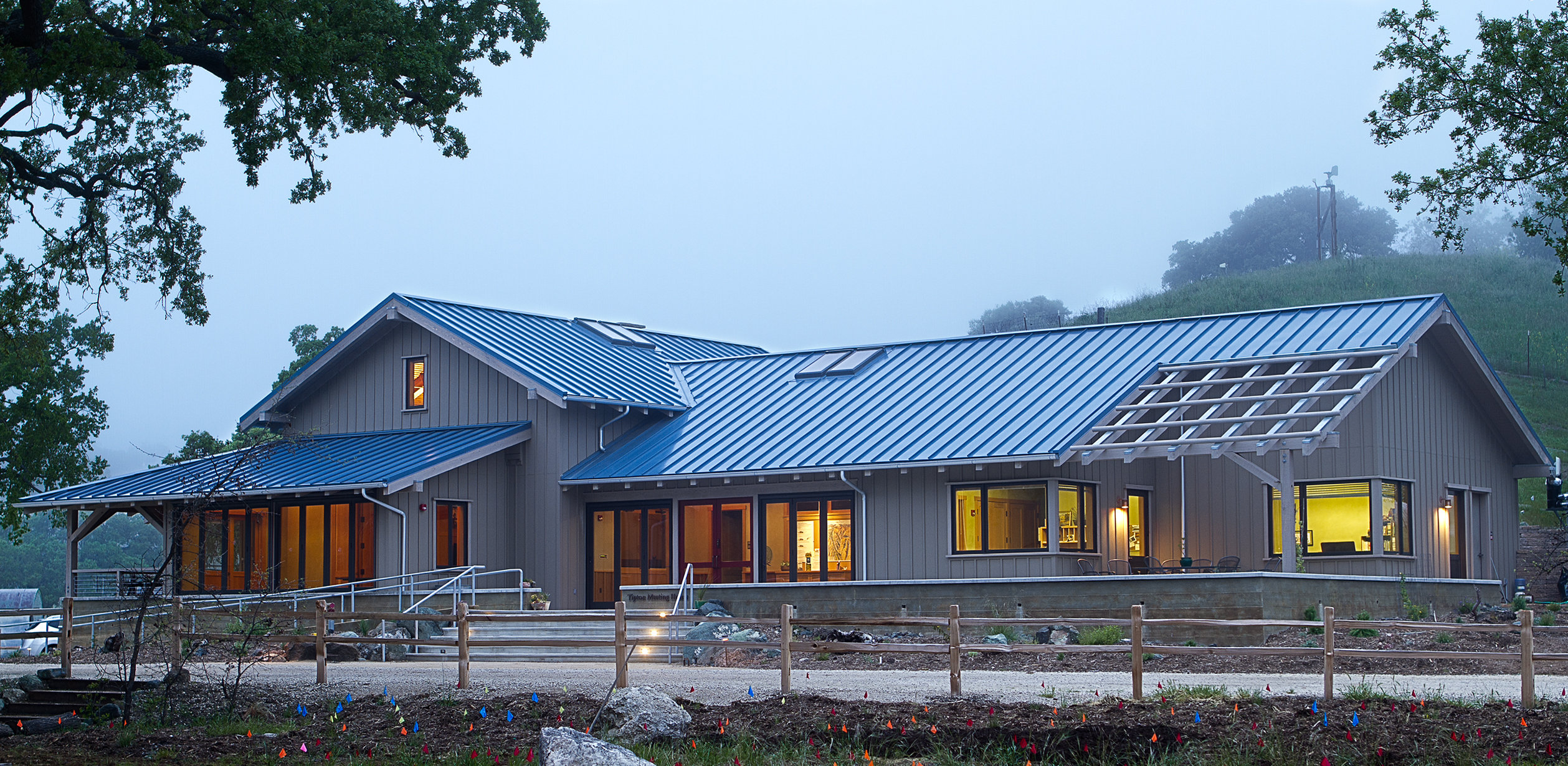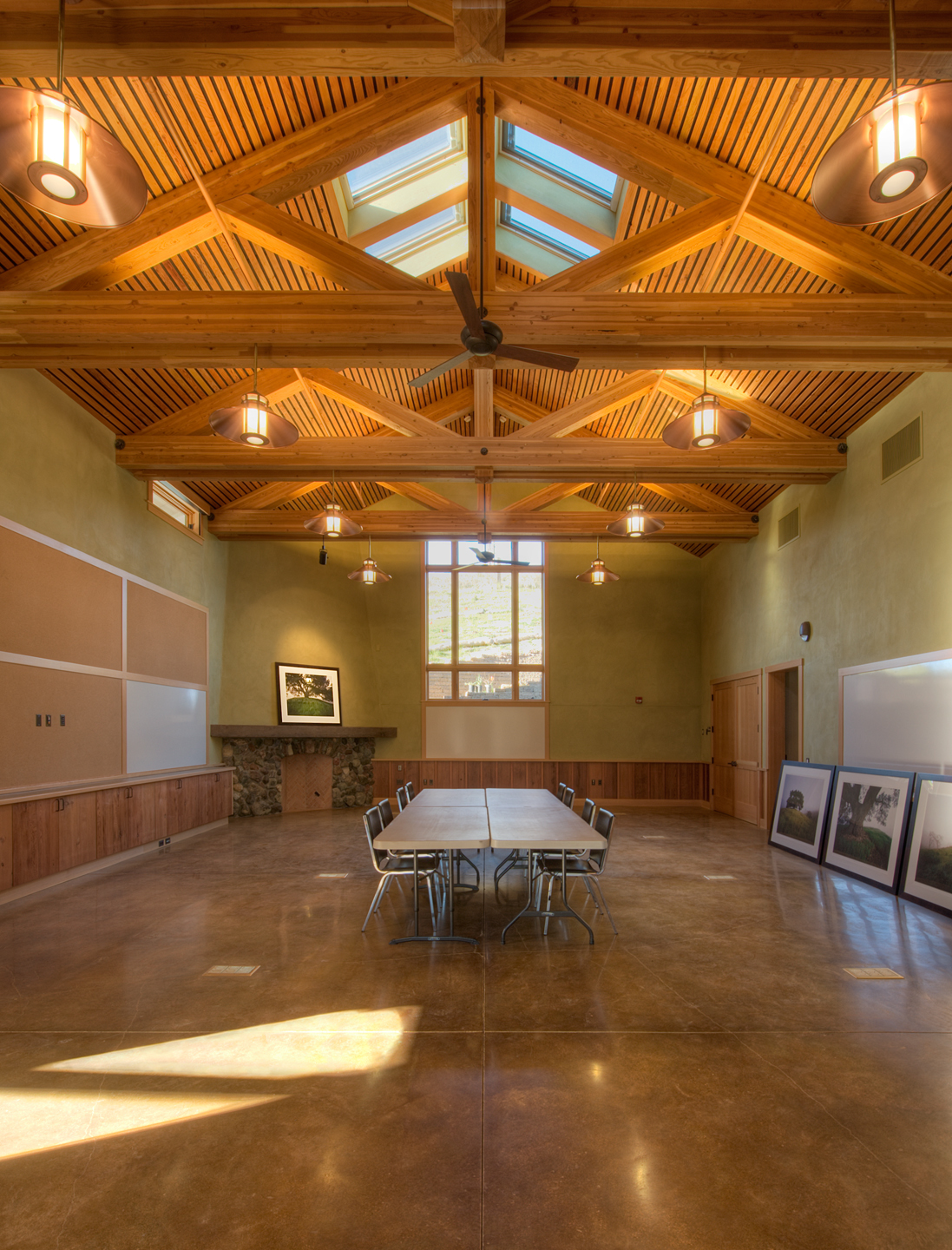How to Make a Deep Green Building
It Takes Commitment, Research, and Money

In March of this year, the Tipton Meeting House at the UCSB Sedgwick Reserve in Santa Ynez, California, was dedicated by UCSB Chancellor Henry Yang before an enthusiastic crowd. The building had just received its LEED (Leadership in Energy and Environmental Design) “Platinum” certification from the US Green Building Council, and Chancellor Yang noted that it was one of only four Platinum buildings in the UC system.
What does it take to create a building that will use net-zero energy, will consume a fraction of normal water use, and that is filled with reclaimed, recycled, and healthy materials? As the principal architect of the building, I know that it takes at least three things: commitment, research, and money.
Every member of the project team, including owners, donors, users, architects, engineers, landscape architects, contractors, and subcontractors has to be enthusiastic and knowledgeable about the environmental goals of the project. In the case of the Tipton House, a daylong pre-design meeting of all participants lead to a unanimous goal of “Platinum” and to a felicitous discovery: Only at the end of the day did the ranch manager mention the existence of two 30,000 gallon cisterns, which led the mechanical engineer to a cost-effective way to create geo-thermal heating and cooling, a key to the building’s low energy use.

Systems that use less energy and water than most, and materials that are more local, recycled, and healthy than normal take extra effort in the design phase. Instead of just specifying the well-known options, our team spent extra time in designing a geothermal heating and cooling system and a rain-collection system for flushing toilets. We sought out local sources of recycled ceramic tile and petroleum-free paving; we searched for doors and windows that were made with sustainably-harvested wood. Volunteers and the builders collected stones from the property and salvaged and renewed redwood planks from the demolished buildings on site. This upfront investment saved money in construction and will save energy and water for years to come.
Some parts of green building cost nothing extra (locating the building properly, putting windows in the right place for sun and ventilation, leaving structural materials exposed). Some cost less (reducing cooling system sizes by keeping out the heat of the sun and reducing heat from lights). However, in a deep green building, some things will cost more. The design and engineering phases take more time. Many of the products that have low environmental impact and are made to last cost more than the typical. Some of these extra costs will result in operational and maintenance savings over many years; some have no local payback but will help to lower environmental damage where the materials came from and where they will end up.
The Tipton Meeting House is considered a deep green building today. But if we are to slow climate change and environmental damage and move to a more sustainable future, over the next ten to 20 years we must see more and more buildings like it and beyond it. The pioneering buildings of today must become commonplace.



